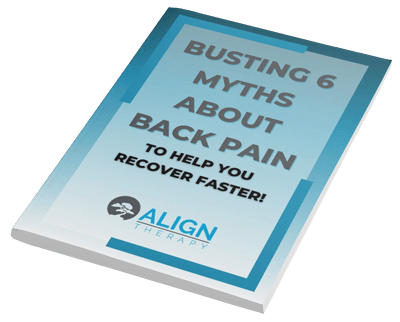Do you ever feel like the insurance system is geared against you getting the best scoliosis treatment possible? When you or your child has been diagnosed with scoliosis, it is very common to feel overwhelmed and not know what to do. You want the best possible scoliosis treatment, but often you might find yourself stuck between what is best for you or your child and what insurance is willing to cover.
The unfortunate reality is that insurance companies are more focused on cost savings and their bottom line than providing the best scoliosis treatment possible. Even though they may approve treatment, they often limit that scoliosis treatment to outdated techniques and ineffective methods.
This happens even when new and better scoliosis treatment techniques are consistently coming out and being made available. You deserve the most effective treatment for your spine, which might mean researching on your own, identifying the experts, and possibly not using your insurance.
In this post, I will explore why you shouldn’t let your insurance company decide what is right for your scoliosis treatment plan. I will also share three real-life examples of how following insurance-driven care can lead to worse outcomes…along with how you can take control of your scoliosis journey!
Your future, or your child’s, is worth more than the limitations of an insurance policy. Let’s talk about how to make the best choices for your health and spine future.
Why Insurance-Driven Care Isn’t Always the Best Care
I don’t really know anyone that would say their insurance company has their best interest at heart when it comes to real health issues. It always seems like we are fighting them on something. I see this on the side of the provider as well as when I am a patient. Insurance just isn’t set up to do what is best for us.
Sure, they do wellness checks, but this is mostly to avoid them having larger costs in the future, as well as being legally mandated to do so. They even might do some health screenings at no charge to save money in the future.
Everything comes down to the bottom line and if they can save money by denying a procedure, medication, or treatment, they usually will.
Now, I am not just dogging on the insurance companies because it is easy or fun. I am explaining this because it helps us understand why often they will deny or limit treatment for things like scoliosis and other spine deformities, as well as other health issues.
Take adolescent scoliosis for example. Most of my adolescent patients don’t have pain associated with their scoliosis. Because of this, the insurance usually decides treatment is not “medically necessary” and won’t cover it. That is…until they progress to the point of needing surgery. Then it all the sudden becomes necessary to treat it.
With my adult scoliosis patients, usually they have pain associated with their curve, and they are worried about it getting worse, so they will usually cover treatment. But…there is usually a limitation on that treatment. This could be the number of visits or not covering certain types of treatments. (e.g. dry needling or Schroth)
The bigger issue is that in the insurance model, it is hard to find a provider that is willing to work with insurance and treat under their restrictions, who is also a specialist in scoliosis treatment. Most specialists really don’t like being told how to treat by insurance companies. How did we get to that point anyway?
Trusting the Experts and Doing Your Own Research
One of my biggest frustrations in treating scoliosis is when patients, as well as providers, think all physical therapy treatment is the same for scoliosis. I often hear someone is going to “try” a therapist in their area because they are “in-network”. Even when that therapist is not trained in scoliosis specific exercise!
You might as well just roll the dice on that curve!!
If you are looking for treatment for something specific, like scoliosis, please do your homework. Research what methods have been shown to be effective. Look up providers that specialize in treating that condition and if they are a good fit. Check to see how often they see scoliosis and what research they have to back what they do.
Once you find who the BEST person is to treat your scoliosis…then you can ask that office about insurance. Please don’t make that decision first based on if they take your insurance. That shouldn’t be the most important thing if you are truly looking for specialized care that works!
We will discuss what to do if you find that provider and they don’t take your insurance in the following section.
One of the best places to search for information on specialized scoliosis treatment is the internet. Gasp! Yes I just said to look it up on the internet.
Now, make sure you are looking at reputable websites and making sure their information is backed by research, but this is a good place to get information. Even social media can be helpful to see what current treatments are out there.
Then, after you find what you think is a good option, dig a bit deeper. Look up those treatments on PubMed, a National Institutes of Health website where you can look up research. Google Scholar is also a great resource to verify the research behind treatments.
If a treatment is claiming to “fix” scoliosis, I would be very cautious. If they make giant claims of reduction in curves or 100% of their patients reducing scoliosis, I would also be very cautious. Have them back what they do with research that is mainstream and not just case studies they have conducted. If someone is specialized in scoliosis, they should be able to back it!
Definitely be an advocate for yourself and realize the treatments presented to you in your doctor’s office might not be the best treatments for your situation or condition. Do your research!
Real-Life Examples of Insurance- Driven Treatment Gone Wrong
Unfortunately, I have plenty of examples of people who have decided to just go with their insurance and have had a poor outcome. Here are 3 quick stories.
Example 1: Sherry
About 3 years ago, Sherry arrived at the clinic after having been to 4 different physical therapists, a surgeon and pain management for her scoliosis. The PT had “failed” to help her back pain, and the injections were starting to last only a short amount of time.
On top of that, her scoliosis curve was getting worse and she was starting to notice her appearance more. She was in desperate need of help and had researched and found The Schroth Method might be able to help her.
We started treatment with gentle stretching, strengthening, and postural retraining using The Schroth Method. Within 3 weeks she mentioned to me that her back pain was down by 25%, and then at 6 weeks it was 50% down! She was starting to reduce her pain medication and increase her activity level. She was excited and encouraged.
How much time, energy, money, etc was wasted in her getting treatment that was not specific to her curve and not specialized in scoliosis?
Example 2: Kelly
After being diagnosed with scoliosis, Kelly, who was 12 at the time, was taken to her local chiropractor for treatment. He had seen scoliosis before, but didn’t have any specific training to stop or reduce progression of the curve, but he was…”in-network”. She started with a 15 degree curve that soon increased to 25 degrees.
Figuring her scoliosis just doesn’t respond to treatment, her parents decided to just wait and see if it would continue to get worse. At her next 6 month x-ray she had progressed to 35 degrees and needed bracing. It was at that point that her orthotist (brace maker) suggested she come to my clinic and do Schroth exercises to compliment the brace.
Over the next year, Kelly was faithful with her home exercises, learned The Schroth Method well, and was successful in stopping any further progression of her curve. She also was more compliant with her brace and noticed her posture improve.
She was able to stop a curve that was most likely headed to surgery with specialized care that her doctor and her insurance didn’t tell her about!
Example 3: John
John was diagnosed with scoliosis when he was a teenager, but it was small enough that nothing was done at the time and he didn’t notice any changes over many years. Now, in John’s 60th year of life he started to notice changes in his posture and more low back pain. He tried stretching, medication, and even had an MRI and x-ray which showed his scoliosis curve had progressed.
Being used to researching things for work, John researched treatment techniques for scoliosis, and found my clinic. After a consultation, he found out his insurance was “out-of-network” so he decided to go to a therapist who was known for treating back pain, but not specifically scoliosis.
After about 1 year, I noticed John was on my schedule. In talking with him, he had tried general physical therapy for 3 months, with no change in his issues. He then did injections and was on stronger pain meds, with only marginal change.
Finally, he made the decision to come back and pay out of his own pocket to receive the treatment he had researched a year ago. He had a rough road, but he was able to get to the point where he had less back pain and got back to things he loved. His scoliosis wasn’t “fixed” but he could manage it better and was off pain meds.
I share these examples, not to boast about our specialty, but to illustrate the need and benefit of treating scoliosis with specialized techniques. When you treat the actual problem…the scoliosis…you can get significantly better results!
Taking Control of Your Child’s Scoliosis Treatment
Investing in specialized care is worth it for the long-term health and well-being of you or your child. Letting insurance direct your care puts the interest of the insurance company above your own, which is definitely not ideal.
When you learn specialized treatment for scoliosis that is specific to your curve, it is beneficial for the rest of your life. You will always have scoliosis, so learning how to manage your curve is well worth your time.
If you are worried about your insurance not covering specialized care, I would suggest a few things.
- Ask about a payment plan to let you spread out that payment.
- Pay with your HSA or other healthcare savings plan.
- Check with your insurance to see what your out-of-network benefits are.
- Petition and appeal with your insurance to get them to cover some of the cost.
- Use a payment option like CareCredit which has no-interest payment options.
The bottom line though…don’t make the decision of what is best for you or your child based solely on what your insurance will cover.
The real truth is when we are not dealing with insurance, we can provide a better experience for our patients, a treatment that is more effective, and do what is best for the patient. In that scenario, everyone wins!
Conclusion
Effective treatment of scoliosis requires a proactive approach in finding and researching the best treatments possible, finding the providers that can do those treatments, and matching your goals with who you choose for treatment.
When you are involved in the treatment process, the outcome is better and you are more committed to the process. Yes, it will take more effort, time, and possibly money, but it is worth it!
If you are looking into scoliosis specific treatment, we would love to help you. Sign up for our Free Discovery Visit Consultation and we can discuss what options might be right for you.
Good luck on your journey!



